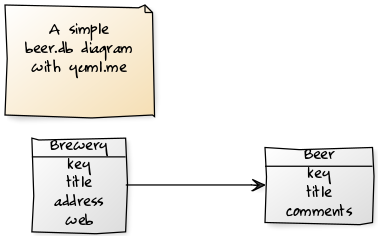You [Gerald Bauer¹] have been permanently banned [for life] from participating in r/ruby (because of your writing off / outside of r/ruby). I do not see your participation adding anything to this [ruby] community.
-- Richard Schneeman (r/ruby mod and fanatic illiberal ultra leftie on a cancel culture mission)
¹: I know. Who cares? Who is this Gerald Bauer anyway. A random nobody for sure. It just happens that I am the admin among other things of Planet Ruby.
Case Studies of Code of Conduct "Cancel Culture" Out-Of-Control Power Abuse - Ruby - A Call for Tolerance On Ruby-Talk Results In Ban On Reddit RubyUpdate (August, 2022) - A Call for More Tolerance And Call For No-Ban Policy Results In Ban On Ruby-Talk (With No Reason Given)
> I just banned gerald.bauer@gmail.com. > > -- SHIBATA Hiroshi > >> THANK YOU >> >> -- Ryan Davis >> >> >> My full support to moderators. >> >> -- Xavier Noria >> >> My full support to moderators. >> >> -- Carlo E. Prelz >> >> That's fun. >> >> -- Alice
« Ruby Open Data Week 2021, March 6th to March 12th - 7 Days of Ruby (Open Data) Gems
Day 7 - erd Gem - Generate Entity-Relationship Diagrams (ERD) for Your ActiveRecord Models
Written by Gerald Bauer
A code monkey and enthusiastic collector (and publisher) of open football and beer data. Skills include Ruby, SQLite and CSV. Spec lead of CSV <3 JSON.
Let’s say you have defined your database schema (tables) with ActiveRecord. Example:
create_table :breweries do |t|
t.string :key, null: false
t.string :title, null: false
t.string :address
t.string :web
end
create_table :beers do |t|
t.references :brewery
t.string :key, null: false
t.string :title, null: false
t.text :comments
end
And your models with classes in Ruby and assocations with class macros such as
belongs_to, has_many, and so on:
class Beer < ActiveRecord::Base
belongs_to :brewery
end
class Brewery < ActiveRecord::Base
has_many :beers
end
How can you auto-generate an entity-relationship diagram? For example:

The good news. The ActiveRecord machinery already has everything built-in for a minimal (quick ‘n’ dirty) do-it-yourself version.
Step 1: “Discover” all models
Use ActiveRecord::Base.descendants that
gets you an array with all loaded (known) models at runtime
to find (discover) all models of your app. Example:
models = ActiveRecord::Base.descendants
puts " #{model.size} models:"
models.each do |model|
puts " #{model.name}"
end
Will print for our simple example schema:
2 models:
Beer
Brewery
Step 2: Get all “meta” info - all column definitions and associations
Now lets print out all columns with its name and SQL type
plus all associations (defined with the “classic” belongs_to, has_many, etc. macros):
models.each do |model|
puts "#{model.name}"
puts ' columns:'
model.columns.each do |column|
puts " #{column.name} #{column.sql_type}"
end
puts ' assocs:'
model.reflect_on_all_associations.each do |assoc|
puts " #{assoc.macro} #{assoc.name}"
end
end
Results in:
Beer
columns:
id integer
brewery_id integer
key varchar(255)
title varchar(255)
comments text
assocs:
belongs_to brewery
Brewery
columns:
id integer
key varchar(255)
title varchar(255)
address varchar(255)
web varchar(255)
assocs:
has_many beers
Step 3: Turn the text describing your models and assocations into a diagram
Now all that’s left is turning the text into a diagram. Again the good news - tools and services
abound - let’s start with the yuml.me service. Use:
[note: A simple beer.db diagram with yuml.me {bg:wheat}]
[Brewery|key;title;address;web] -> [Beer|key;title;comments]
that gets turned into:

Now why not find a gem that alreay has all the code packed up for easy (re)use with more examples and a getting started guide and much more?
What’s the rails-erd gem?
Let’s thank Rolf Timmermans, Kerri Miller, and friends who have created the rails-erd gem that
lets you easily auto-generate
entity-relationship diagrams (ERD) from your ActiveRecord models.
Not just for Rails. Although the gem includes rails in its name
it works great with “plain vanilla” ActiveRecord models without
requiring the Rails machinery.
Let’s try it using the beer.db ActiveRecord models and schema
bundled-up for easy (re)use in the beerdb-models gem.
require 'beerdb/models' # use $ gem install beerdb
## Let's create an in-memory SQLite database
DB_CONFIG = {
adapter: 'sqlite3',
database: ':memory:'
}
ActiveRecord::Base.establish_connection( DB_CONFIG )
BeerDb.create_all ## create tables (e.g. breweries, beers, etc.)
## Now hand over to rails-erd
require 'rails_erd/diagram'
class YumlDiagram < RailsERD::Diagram
setup do
@edges = []
end
each_relationship do |relationship|
line = if relationship.indirect? then "-.-" else "-" end
arrow = case
when relationship.one_to_one? then "1#{line}1>"
when relationship.one_to_many? then "1#{line}*>"
when relationship.many_to_many? then "*#{line}*>"
end
@edges << "[#{relationship.source}] #{arrow} [#{relationship.destination}]"
end
save do
puts @edges.join("\n")
end
end
YumlDiagram.create
will result in (simplified):
[Country] 1-*> [State]
[State] 1-*> [City]
[City] 1-*> [Brewery]
[Brewery] 1-*> [Beer]
[Brewery] 1-*> [Brand]
[Brand] 1-*> [Beer]
And turned into a diagram:

Note: Instead of using the all-in-one YumlDiagram.create convenience method
you can walk through step-by-step. Example:
## Get all meta-info
domain = RailsERD::Domain.generate
pp domain.entities ## dump all entities (models)
pp domain.relationships ## dump all relationships (assocs)
## Generate diagram
diagram = YumlDiagram.new( domain )
diagram.generate ## step 1 - generate
diagram.save ## step 2 - save
What’s Graphviz and the DOT language?
Note, by default the rails-erd uses the Graphviz class
to build your diagrams using the graphviz machinery (and its DOT language).
Graphviz (short for Graph Visualization Software) is a free open source package by AT&T Labs Research for drawing graphs specified in DOT language scripts started more than fifteen years ago. Example:
digraph example
{
Brewery [shape=box, style=filled, color=blue]
Beer [shape=box, color=navy]
Country -> State -> City -> Brewery
Brewery -> Beer
Brewery -> Brand
Brand -> Beer
}
Change the YumlDiagram.create method to RailsERD::Diagram::Graphviz.create
and you will get a GraphViz-generated diagram as a PDF document, PNG pixel graphic,
SVG vector graphic or whatever filetype you desire. That’s it.
Find Out More
References
- Home :: github.com/voormedia/rails-erd
- Gem :: rails-erd
- Docs :: rials-erd
Diagrams
- Yuml :: yuml.me
- Graphviz :: graphviz.org
Built with Ruby
(running Jekyll)
on 2023-01-25 18:05:39 +0000 in 0.371 seconds.
Hosted on GitHub Pages.
</> Source on GitHub.
(0) Dedicated to the public domain.